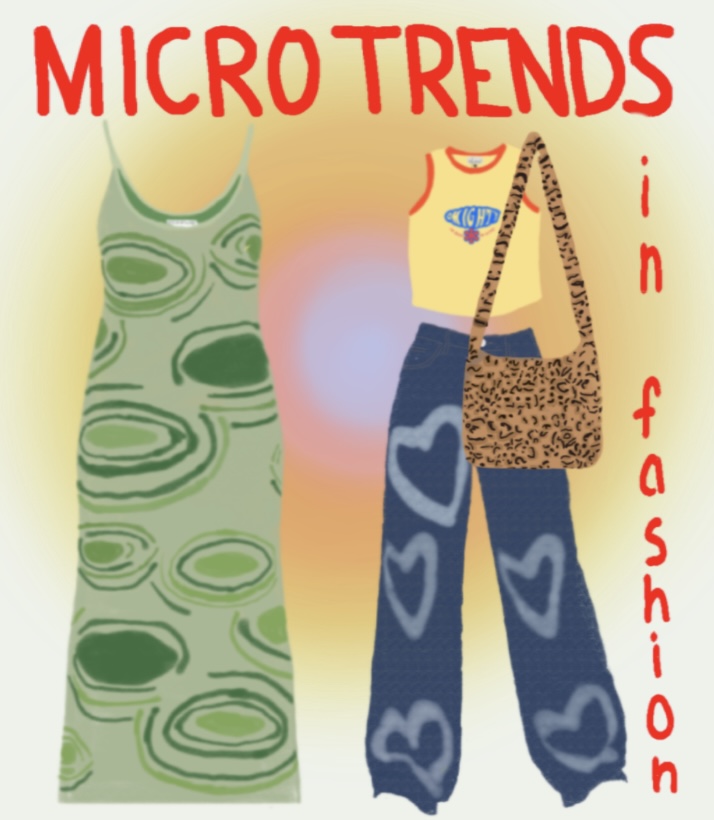Pollution vs. popularity
Micro trends maintaining fast fashion’s enduring hold
Sustainability is prevented by the rapid pace of micro trends in fashion. The Sidekick staff designer Caroline Moxley thinks we can take advantage of experimenting with so many styles and trends and rediscover preloved items.
December 12, 2022
As a fashion addict, I plan out every single piece of clothing I will acquire. I tell myself it is because I am smart about my expenses. Realistically, I am just painfully broke.
When I finally got my hands on a crisp 20 dollar bill for pet sitting my neighbor’s dogs, I was fired up to buy a trending dress that fashion icon Kendall Jenner had worn. I counted my money and calculated the tax and shipping. Then, I moved on to phase two: I gave my dad the money, and he placed the order for a cheap dupe of the dress.
I tracked my package every time it crossed my mind until finally, the long awaited dress arrived at my doorstep. With no thoughts other than pure excitement, I ripped it open and threw the dress over my body. As I stepped in front of a mirror, a grin plastered over my face. I don’t know how it happened; but I was, in fact, Kendall Jenner.
But my frenzy was crushed in just minutes of receiving my new, spectacular dress. My outfit was already considered “last season” and “overused” by the fashion overlords of the Internet. Thankfully, I’m a pro at working out fashion disasters.
This short-lived trend is an example of a micro trend. While most fashion trends last a few years, micro trends often do not survive a season.
A big contributor to the development of micro trends is social media and fast fashion. Social media allows trends to spread like a wildfire. This ultimately aids fast fashion’s gain in traction.
The incessant cycle of trend upon trend creates a heavier overproduction of clothing, intensifying the effect of an already harmful fast fashion industry. Boston University School of Public Health states, “Every year, people in the United States throw out more than 34 billion pounds of used textiles. Divided across the population, that’s more than 100 pounds of textile waste per person each year… Once textiles are discarded, 66% of them are sent to landfills in the U.S. where they decompose.”
Micro trends are often misconstrued to be purely evil, but they actually have some perks.
“When the chunky rings were trending, I found my old collection of rings from when I was younger and I started wearing them again,” Coppell High School sophomore Rozhan Shiva said.
Since trends are recycled, people are able to make use out of old items and possibly revamp them in a way they never thought to do. People can discover old items in their own closet, or even pick up a lonely garment from a thrift store.
Micro trends in fashion are polluting the environment more than ever and preventing a rise of sustainability. Optimistically, with so many small lived trends, people are able to experiment with fashion more than ever and take a dive into their closets to rediscover preloved items.
But if you ever catch yourself wanting to follow a trend, not knowing how long it will last, ask yourself if you really love the item, or if it is just trendy. If you are unsure, try buying from a second hand store.
As for me, I hope to see the pollution caused by micro trends slow in the spirit of #sustainablefashion.
Follow @CHSCampusNews on Twitter










